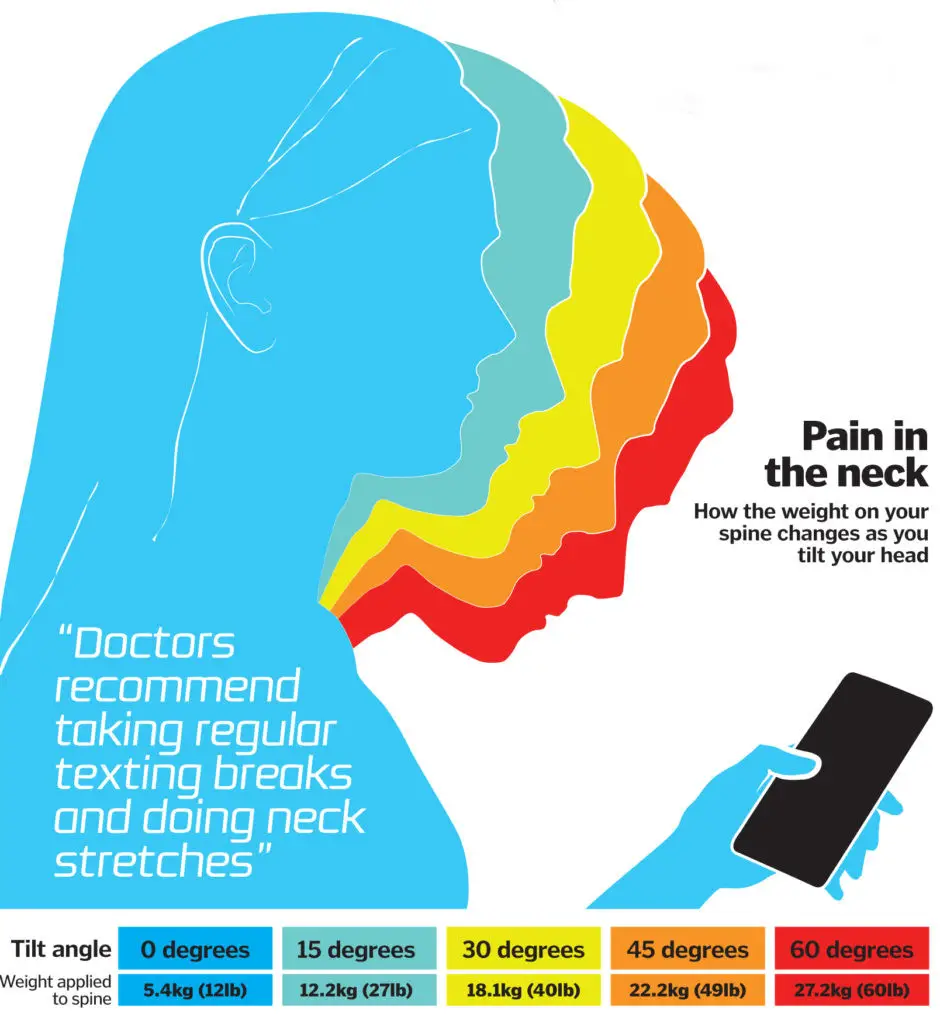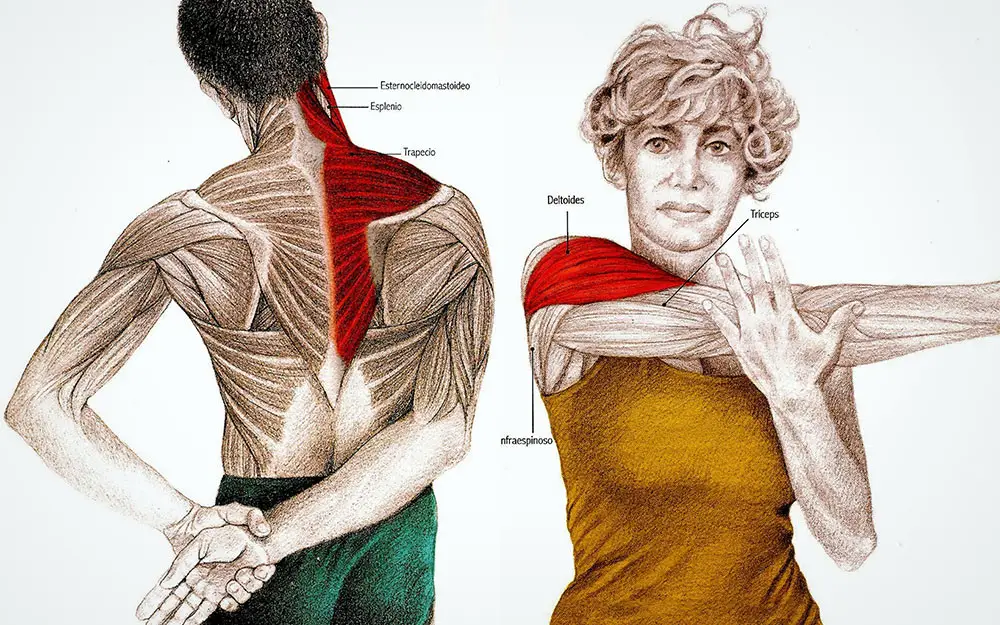
In Spain, 7 out of 10 smartphone users use it every day for at least 30 minutes. 100% of Spaniards who connect to the Internet also do so from their mobile, and 90% connect every day. Spain, by the way, is the fourth country with the highest use of mobile phones and applications such as WhatsApp worldwide..
These are data from the National Commission of Markets and Competition. Along with this other report from Ditrendia we read sentences such as "no one uses a mobile phone more in Europe than the Spanish." With these figures, this chilling amount of hours wearing junk in bad posture, one wonders: what is the correct way to use the smartphone ?
Text Neck: the pathology of the 21st century
The professional associations of Physiotherapists of the Community of Madrid, Catalonia, the Basque Country and Navarra, created the video council that you can see above as part of their campaign "12 months, 12 health advice." Let's look first at the text neck , a new technological disease that manifests itself in a picture of musculoskeletal symptoms after poor posture and the continued use of smartphones , tablets and other mobile devices.
When we use the mobile we tend to flex the cervical posture, twisting the head a few degrees. This neck tilt increases dorsal kyphosis, affecting both vascular pressure, respiratory patterns and even digestion ..
An adult skull weighs between 4 and 5 kg; with a 15 degree flexion, the force exerted on the vertebrae causes it to increase to 12 kg. With a 45 degree incline, this pressure increases to 22 kg . The muscles have to exert greater force to correct the angle and keep the posture in balance. But not even a professional bodybuilder could support such a weight.

The text nec k manifests with regional pain, inflammation, increased muscle contractures or even posterior displacement of the disc, in reference to each of the intervertebral discs that separate our vertebrae. In the long term they can degenerate into chronic diseases, such as headaches, tendonitis, bruxism and even insomnia ..
Using the mobile well means correcting posture: always supporting our hands when we use the mobile, so that by leaving the arm suspended, our cervicals do not have to withstand so much pressure. This postural reeducation is not easy, because it requires self-awareness against bad habits. On the other hand, physical exercise is great for releasing that extra pressure and tension. A sedentary lifestyle reinforces stress and anxiety: it is essential to disconnect. Yoga has also been shown as a skillful support, to reinforce the elasticity of the limbs , along with myofascial induction techniques. However, if we still have discomfort in the suboccipital muscles, a visit to a physiotherapist will be mandatory. 
The thumb of scrolling on mobile
The other key element that comes into play is the thumb. The constant movement of the thumb, flexing and stretching it to reach all the elements of the screen, causes the interior ligaments to deteriorate earlier than usual. This excess generates additional stress on the tendons, leading to cases of Quervain's tenosynovitis or other injuries such as rhizarthrosis of the thumb, the famous osteoarthritis of "seamstresses".
The ideal in this case is similar: leave the wrist in a neutral position, do not force postures - exchanging whenever possible between hands - and avoiding the continuous use of text, resorting to voice writing or any technological support that does not hold you too much time glued to the screen. And of course, keep a neutral and not flexed position , with the smartphone slightly below the eyes and the screen tilted to compensate for the position.

The shoulders of defeat
Drop shoulders are a very common posture. You tend to put your head forward when walking or looking at something. If, in addition, the particular one is to use suspenders or elastic bands to dress, that harmful position will be forced even more. Let's take a look at the following series of exercises to correct the so-called "forward shoulders."
- First, do a series of external rotations with both shoulders . From front to back and vice versa. In this way we will work the load on these muscles in a localized way.
- The following exercise is suitable for the correction of the forward head. It is about looking for any smooth wall and supporting our body perpendicularly . The heels, calves, shoulders and back of the head must be aligned. We will quickly feel like our posture is "unloaded", as if, indeed, a weight had been lifted from our shoulders.
- In the third exercise we return to the first, but forcing the posture, trying to bring the scapulae closer with abductions, pulling out the chest and bringing the shoulders back. The exercise is performed standing up, passing the arms behind the trunk and holding the hand from behind . We will incline the head little by little, keeping the shoulders relaxed. In this way, the most affected muscles are worked: the trapezius, the levator scapulae and the scalene.
- Now we will work the whole arm. Stretched out, with the thumbs up and the chin back , we will make as complete rotations as possible, making arches from back to front and vice versa. This exercise enhances the elasticity of tendons, but it is not advisable to do many repetitions. A couple of sets of 15 movements will suffice.
- Lastly, the ideal would be to tone the chest area . No weights, it is simply about doing exercises on that area and making our body offer greater resistance to the constant use of tablets, mobile phones and other portable technological gadgets . Why eradicate them from our daily lives not to mention, right?